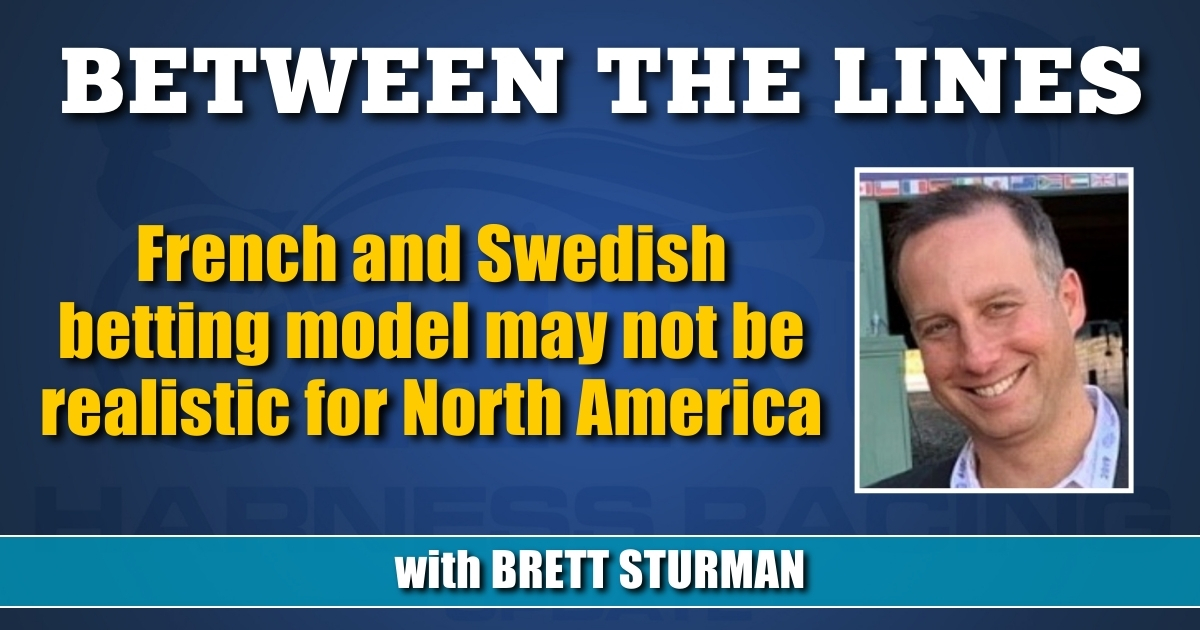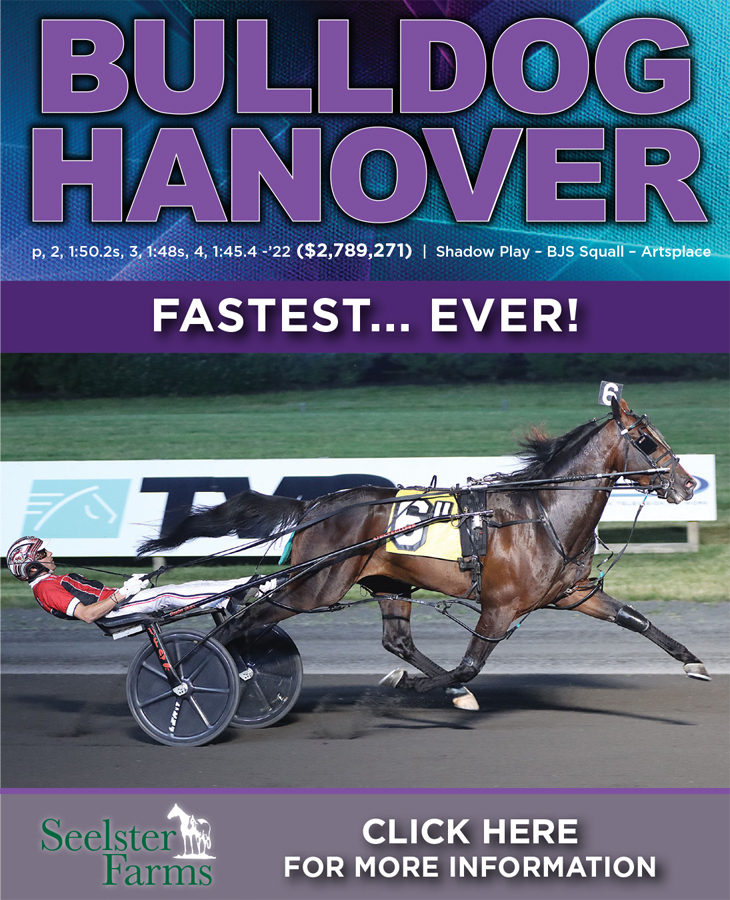

French and Swedishbetting model may not be realistic for North America
Trying to copy the industry structure from Europe that sees
betting controlled nationally may be impossible in North America.
by Brett Sturman
In a recent column, Hambletonian Society CEO John Campbell opined on what amounts to be an advantageous harness racing industry structure abroad, namely in France and Sweden. From a betting standpoint, Campbell noted the benefits of having the betting operations maintained by groups in each of those countries that is directly tied to a larger, singular entity that organizes all facets of the industry.
In the scenarios described by Campbell in which the success of betting is intertwined with the management of purses, infrastructure, branding and advancement of the sport, it begs the question: What would a comparable model look like here, Stateside?
An oversimplified way to think of it would be a setup in which the United States Trotting Association (USTA) governed all of racing, including all the individual states that have racing. Moira Fanning, chief operating officer and director of publicity of the Hambletonian Society, draws a better parallel.
“It’s probably closer to the role of the Jockey Club in thoroughbred racing,” said Fanning. “The Jockey Club has enormous influence
and a lot of money to bring in additional groups under their umbrella.”
The Jockey Club consists of nearly a dozen wholly owned subsidiaries and strategic partnerships around information systems related to breeding services, race program and other statistical data, track management, investment in a media company, and so forth. But, as Fanning also noted, a key difference from their international counterparts is that like the USTA, the Jockey Club is not a tote company.
In France, the Pari Mutuel Urbain (PMU) is responsible for all things betting.
“When France was legalizing horse race betting, the PMU ceded all power throughout the country to one organization,” said Fanning. “It’s very similar to ATG in Sweden, which is the only company licensed to provide betting on horse racing in Sweden. But here, every track contracts with a different tote company. When France did this even though they are smaller as a country than the U.S., they were able to expand throughout the world and bring in betting partners from the U.S., from South Africa, from everywhere.”
While there have been musings to something along the
lines of a national commissioner here in the U.S., the reality
is that it may never be practical due to the industry’s composition.
“I don’t think a similar structure to France or Sweden is likely to happen here, because every state is intent on controlling the gambling that goes on within their state boundaries,” said Fanning. “I’ve called it a single company in France, but it’s actually a conglomerate of many companies as in tote, as in marketing, promotion, as in LeTROT, horse breeding and registration, but they still all come into one sort of general assembly.
“Probably the best example of that is that you don’t ever see them having races on top of one another. They set their post times, they set their schedules and there’s always a race on. Sometimes a harness race may come close to a thoroughbred race and there could be conflicts with late race delays and things like that, but I’ve rarely seen them doing two races at a time. And that would be difficult to control here too because you’d need to include the thoroughbreds too.”
As I thought about myself, North America may be the only place in the world that doesn’t centrally manage race times.
Beyond coordinating schedules, something that the larger tracks here actually do attempt with each other, the entities that oversee racing in France and Sweden have managed to build successful brands with regards to among other facets, wagering. For example, Sweden’s weekly V75 (Pick-7) wager handles upwards of $10 million.
“They develop different tote systems, they develop different wagers, and they’ve got a lot of control and a big budget and the government views them as well worth supporting because of the agricultural sector of it,” said Fanning. “And it’s been very profitable! It’s only been in the last couple of years where they’ve felt the pinch from sports betting but even now, they have licenses where you can bet sports and horses together through the same wallet.”
Another key difference in fairness to the U.S., is that harness racing in both Sweden and France is a national sport. There’s far more awareness from the general public in those countries, which can carry greater influence. That said, there could still be opportunities here domestically to consistently put revenues and funds into infrastructure, promotion and innovative wagering if there was any sharing agreement between the fragmented parties.
It obviously isn’t realistic to envision a total overhaul of the industry structure as it’s always been, but that shouldn’t preclude the desire to try for any form of standardization. From a horseplayer standpoint and maximizing the sports total handle collectively, the lowest hanging fruit could be as simple as coordinating post times and standardizing lower takeout. Combine that with a nationally promoted wager that carries a potential six-figure payout and maybe that can be the start of something that mirrors the success seen elsewhere. Maybe one day that’ll happen here.














